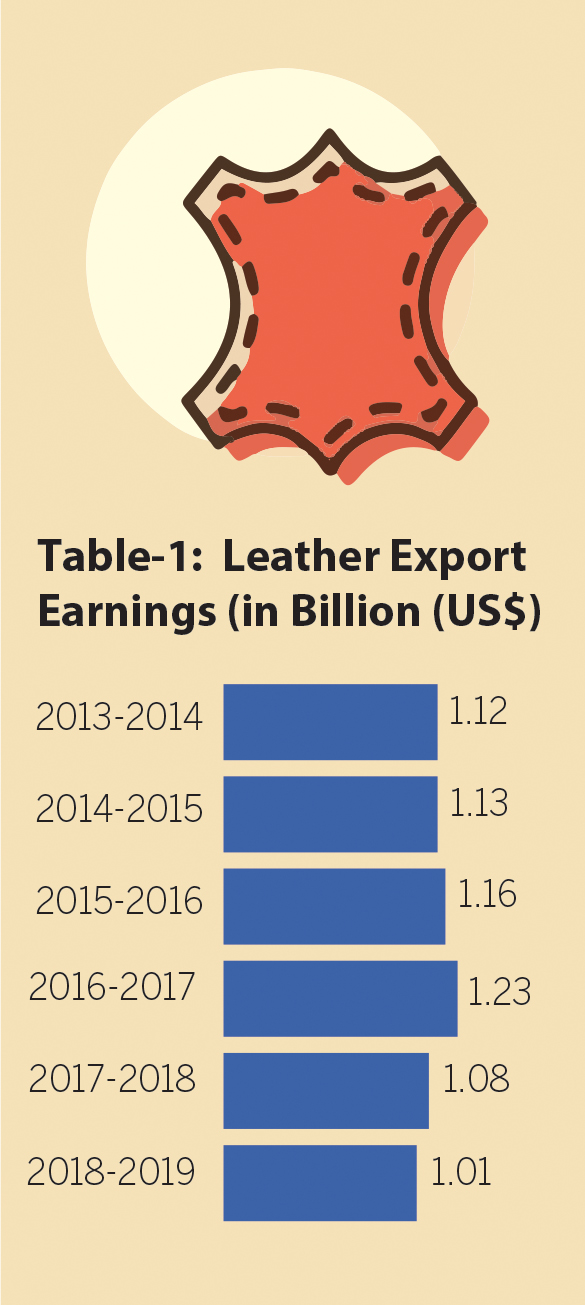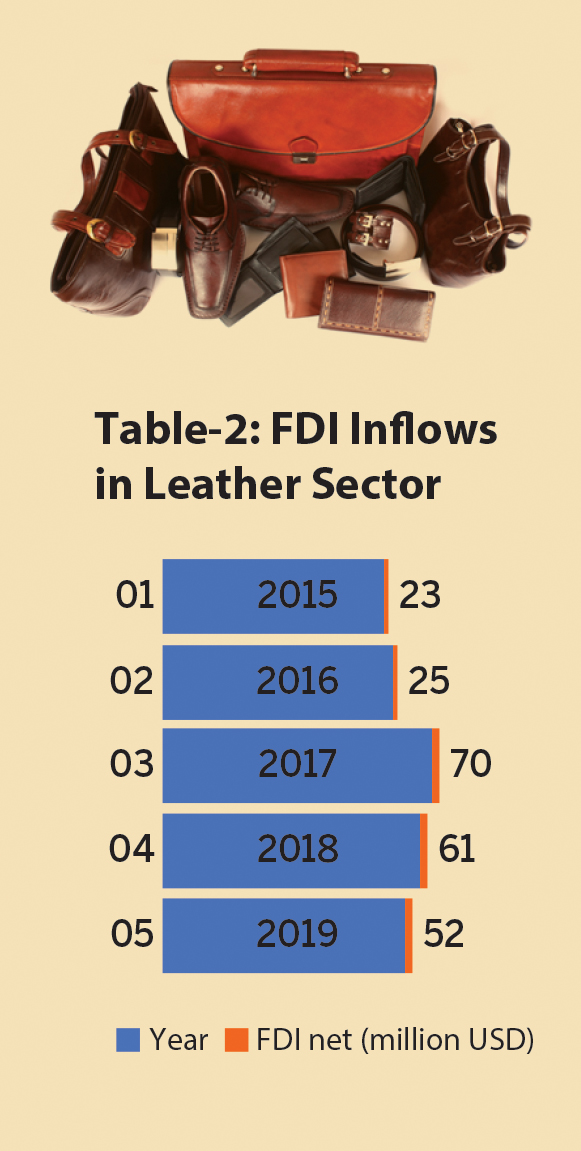A Boom in the Offing
Bangladesh’s leather and footwear sector has a huge potential for transformation, generating billions of dollars in additional export earnings, thanks to the availability of local raw materials, supply management within the export industry, abundance of labour, and policy support. Md. Sayful Islam reflects on the next boom in leather and footwear sector.

One of the oldest industries in the country, the leather and footwear sector has been making noteworthy contributions to the economy over the years. Contributing 0.6 per cent to the GDP in 2018 and providing direct and indirect employment to over 850,000 people, the industry caters to two different markets; domestic and foreign. A large and growing domestic market of US$2.0 billion is supplemented by exports worth over US$1.0 billion. Major products include finished leather, footwear, leather products such as bags, purses, luggage, belts, wallets and leather jacket.
At present, around 220 tanneries, 3,500 small and medium enterprises (SMEs), 90 large firms, and 15 big enterprises are operating in the country mainly for the export market. Bangladesh meets the demand for about 10 percent of the world’s total leather market. The government considers ‘leather goods and footwear’ as one of the main growth generators for the country with the fastest growing segment of the leather industry. This sector has a strong backward linkage in terms of locally sourced raw materials with a domestic value addition as high as 80-95 per cent. The raw hides and skins are collected from leather depots located in Dhaka, Chattogram, Cumilla, Kushtia, Natore and Rangpur.
National Industrial Policy-2016 has given top priority to the leather sector and the government has identified this sector as one of the most potential sectors for attracting FDI (foreign direct investment). Furthermore, Leather and Leather Goods Development Policy 2019 incorporated 17 types of incentives to boost the sector’s export earnings to $5.0 billion by 2024. In order to facilitate the growth of the footwear and leather goods industry, three industrial parks are being set up in Rajshahi, Savar near Dhaka and Chattogram regions. The Foreign Private Investment (Promotion and Protection) Act, 1980 ensures legal protection to foreign investment. In addition, the government provides attractive incentives for leather sector including reduction in tax rate on export earning, bond warehousing facilities for 100 percent export-oriented leather industries, duty draw-back facility, tax holidays depending on the location of the factory, and 15 per cent cash incentive on the export of shoes and bags made by synthetic and fabrics and so on.
In addition, export incentive on crust leather is 7.5 percent while it is 15 per cent on leather goods. Such incentives can draw FDI to this sector.
An investor feels comfortable in case of the long-term financial and non-financial regulatory processes for starting and continuing investment in an economy. Frequent and random changes in policies, incentives, regulatory processes intimidate investors and prompt them to disinvest or refrain from making investments. Moreover, inconsistent policies and formalities of different regulatory authorities of a given economy also hold back investors from investing in any foreign country. Considering all such limitations the leather sector is maintaining significant growth and helping our economy through establishing new industries which also creates new jobs for skilled and semiskilled labor.
In the fiscal 2017-18, according to data from the EPB, exports of leather, leather goods, and footwear were US$1.08 billion. In 2016-17, Bangladesh exported leather and leather goods worth $1.23 billion, compared with $1.16 billion in the previous fiscal year.

It is to be noted here that the government has already set up a modern leather industrial estate in Savar and two more leather industrial parks will be set up in Chattogram and Rajshahi for unlocking the huge potentials of the country’s leather sector. As Bangladesh’s RMG (readymade garments) is going ahead smoothly, the leather industry will get extra benefit banking on the progress. When the RMG sector has brought in various leading brands in Bangladesh with their direct presence, they will be very happy to put their own orders of leather products in the same country from where they are sourcing apparels.
So, the growth of the textile and RMG sector may actively help the growth of leather and allied industries like footwear and other leather goods industry. With the increase in worldwide disposable income and fashion awareness, the global leather goods market is forecasted to grow at a compound annual rate of over 5.54 per cent between 2021 and 2025 and reach a market size of US$629.65 billion by 2025.
Therefore, this sector in Bangladesh has a likelihood of turning into a hotspot for foreign investment. New investors from many countries have been contacting local leather goods and footwear manufacturers to make investments either in joint ventures or in companies they would establish themselves. Foreign investors are also interested in our huge domestic market because of the rising number of middle-income consumers and lifestyle changes for rapid urbanization that have mainly pushed up the use and sales of leather goods and footwear. Driven by increasing purchasing power of a large and young population, the footwear industry has been growing at 10-15 per cent a year. For this, the leather and leather goods including footwear industries are also getting benefits from the government’s policy support with the aim of encouraging and facilitating the growth of this sector.
The leather sector is also flourishing thanks to the country’s low manufacturing costs, availability of cheap raw materials and its eligibility for trade benefits on exports.

Results of policy support and opportunities in the market may work as incentives for further development that can help attract FDI to the leather industry. The government has taken various initiatives such as giving policy support and incentives for development of the leather and footwear industry. The sector is earning 82 per cent of its revenue from the export sector. Factories are mushrooming alongside increasing interest of investing in this sector. If Bangladesh can properly exploit the export potential of the sector by using the entire raw leather products, it will be able to easily earn US$5.0 billion foreign currency from this sector soon.
Md. Sayful Islam is Law Officer, Bangladesh Investment Development Authority under the Prime Minister’s Office and Advocate, the Supreme Court of Bangladesh. He can be reached at [email protected]




